Post by Allonté Barakat, an undergraduate Liberal Studies major minoring in Interdisciplinary Neuroscience at Portland State University. Allonté is a computer scientist, voice actor and veteran of the tabletop role playing game (TTRPG) scene, with first-hand knowledge of the power of discovering your voice and the effect that voice can have by resonating with others.

FEEL BETTER: Listen to this Short Podcast Now
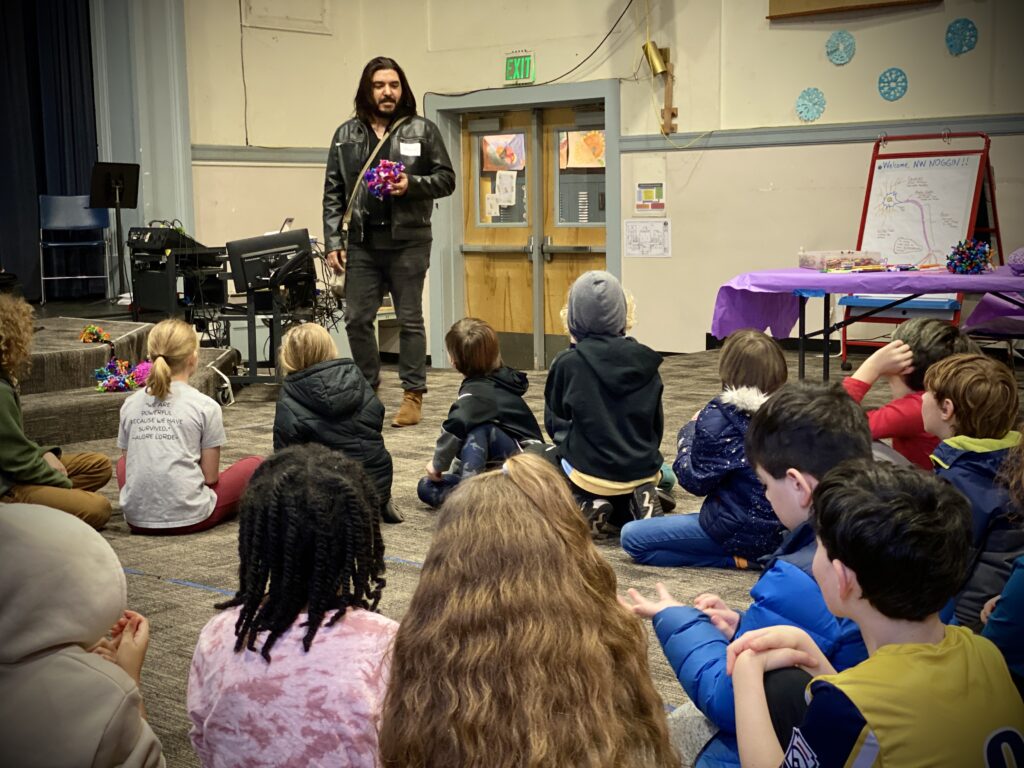
Allonté created a compelling, soothing, meditative and informative podcast about our brains that is guaranteed to make you feel better after listening! Please click on the link to learn, wonder and breathe. Transcript and works cited are found at end of this post.
Outreach
Allonté participates extensively in outreach through Northwest Noggin, and recently joined a visit to Sunnyside Environmental School in Southeast Portland, Oregon. There we investigated the development of our habits and skills, and the underlying brain changes that occur through practice and the essential, necessary mistakes we all experience as we make progress and ultimately improve.
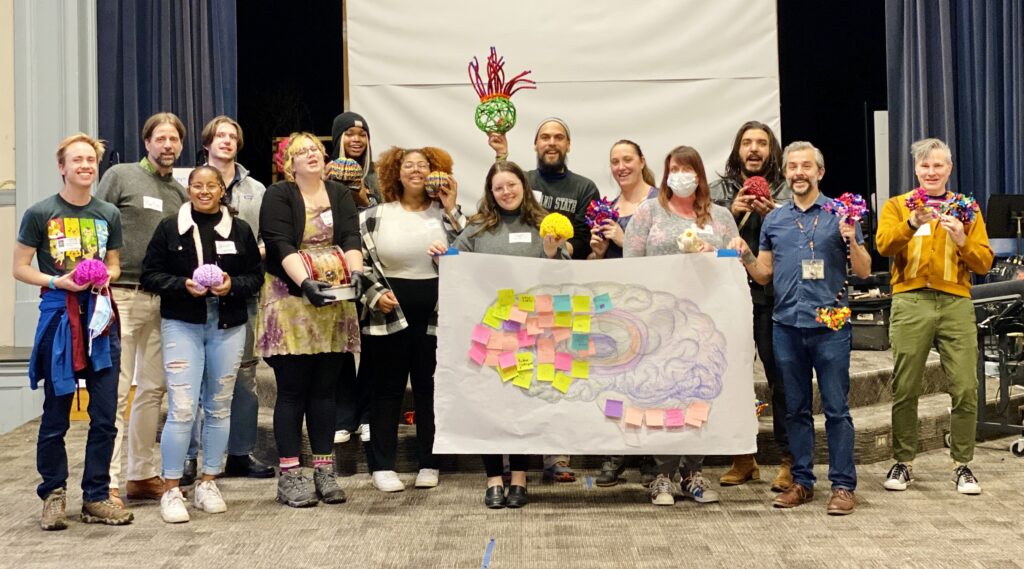
LEARN MORE: Learning through mistakes!
Interview
Allonté went further, though, and not only created the podcast, but also separately interviewed Asa Gervich and Jeremy Thomas, 4th grade teachers at Sunnyside whose students explored their own skills in writing, soccer, singing, sewing, socializing, video gaming and more!
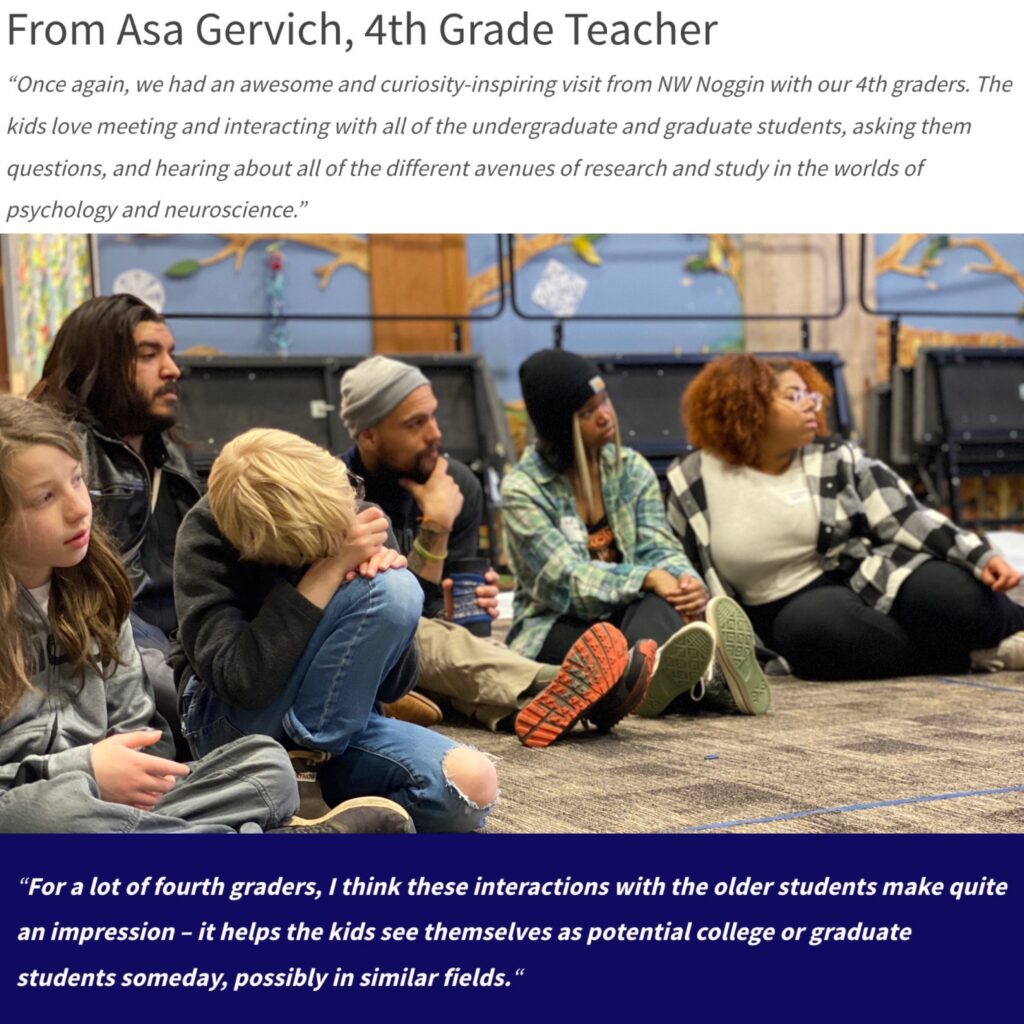
During our Noggin visit, Asa wowed everyone with his own demonstration of drumming, a skill he began acquiring through practice, repetition and mistakes in 4th grade!

You can listen to the interview here:
Podcast Transcript
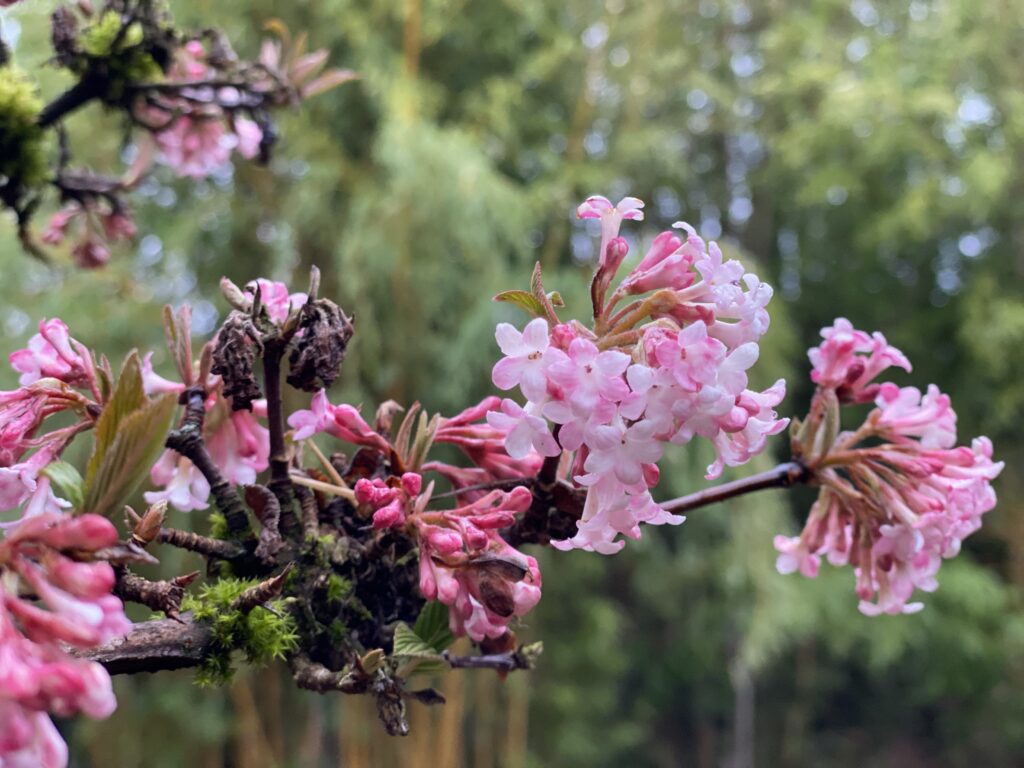
Play “Spring Thaw” (Fulero, 2020)
What does it take to be good at something? For your body and mind, to know what it means to be an expert? Is it Malcom Gladwell’s “10,000-Hours”? (Gladwell, 2008) Perhaps you subscribe to the 80/20 rule. Or maybe, just maybe, it’s a neuro-psychological gift.
Fade to silence.
When we start in this world, we arrive full of potential;…
Play “Wanderer” (Fenn, 2020)
…networks already primed to seek faces and express the joys and pains of being alive. Our brains are filled with 200 billion neurons and another 200 billion glia but by the time we mature, we will lose more than half; but what we gain are trillions of connections (Ackerman, 1992; Gulati, 2015).
Our experiences prune the pathways — each sight, each smell, each scrape and sweet moment — they all shape the structure of who we are.
For those of you who are like me, occasionally stuck in the problematic programming of the past, you should know our brain is an amazing organ; one capable of gaining new skills and of accomplishing great change.
Crossfade into “Melting Sands” (ELPHNT, 2019)
Neuroplasticity is a biological gift; a gift allowing the nervous system the ability to reorganize itself — its structures, its functions, its connections — it all can change its activity in response to intrinsic and extrinsic stimuli (Mateos-Aparicio & Rodríguez-Moreno, 2019; Puderbaugh & Emmady, 2022). As each new connection synapses, as neurons fire and wire, the bio-electric rhythm begins the beat.
With time. With practice. With patience. Our synaptic beat harmonizes in different cortical lobes, it becomes an arrangement of something more.
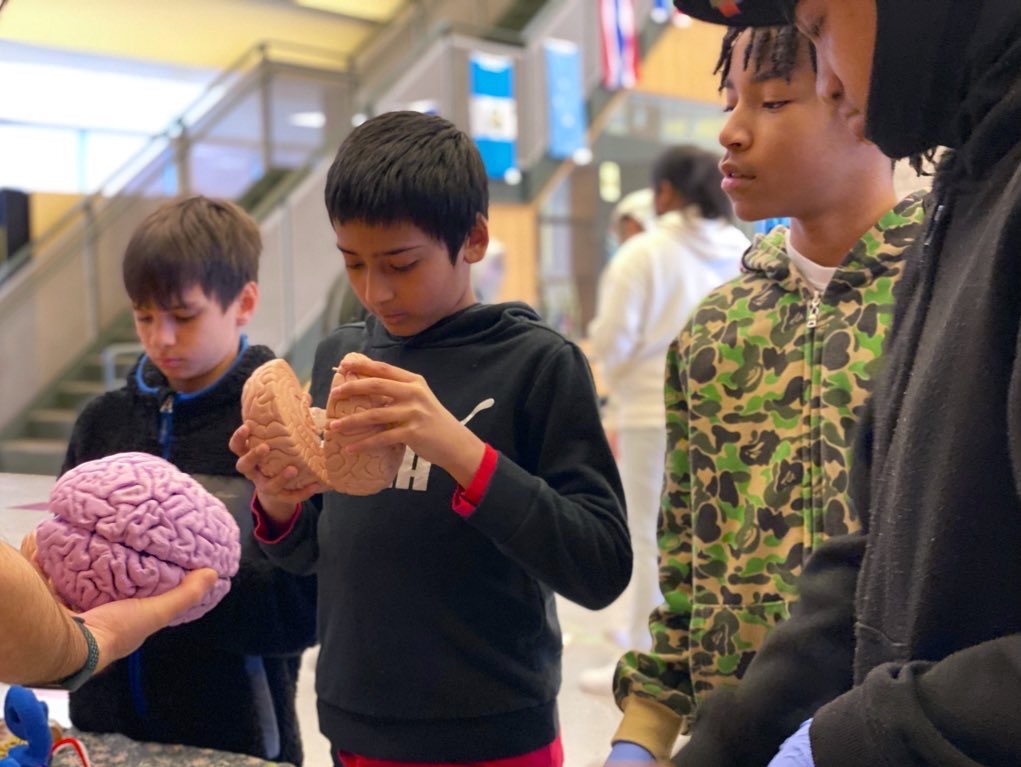
Our bodies thrive on the flow, thrives on the tempo, thrives the pattern of movement; it evokes the passing of time (Big Think, 2023). In our spinal cord, there are neural networks capable of producing rhythmic movements — these central pattern generators keep the measure even when isolated from sensory inputs and the brain itself (MacKay-Lyons, 2002). Locomotion, movement, it involves neuromodulation — a physiological process where a given neuron uses neurotransmitters, like dopamine, to typically initiate a second messenger signaling cascade inside cells, tuning diverse populations of neurons (Avery & Krichmar, 2017). Betz cells, in the frontal lobe, pass impulses to the midbrain and medulla oblongata (Organization of Motor Neuron Pathways, 2018). Information is shared with the cerebellum and basal ganglia; setting timing and deciding to start or stop movement. These neuronal circuits play in concert with the brain stem orchestrating meaningful motor patterns (Marder & Bucher, 2001).

Music Ends.
The question still remains, how do we become skilled in the first place?
On February 6 2023, the University of Birmingham published a discovery; that skilled movement – from writing, to athletics, to music – that the information of complex sequences are zipped and unzipped ahead of the action (Moran, 2023). That the brain stores this information across several motor areas and separates the makeup of skills, the order and the timing, into constituent features (Yewbrey et al., 2023).
Play “No.7 Alone With My Thoughts” (Abrami, 2020a)
Expertises requires our conscious mind to play in an environment that is not random, to experience many repetitions, to get timely feedback, and to never become too comfortable (Veritasium, 2022). The mistakes we make are just as important as getting it right. Don’t beat yourself up. Don’t push yourself beyond your brink. The act of taking a break is extremely important. Give yourself 10 seconds of rest between repetitions. Your skill acquisition and retention will be significantly faster as the hippocampus and cortex remain active in temporal compression providing what is called micro-offline gains (Bönstrup et al., 2019; Buch et al., 2021; Real Awaken, 2022). This approximately 20-fold gain was discovered in 1885 by Hermann Ebbinghaus, in a phenomenon known as the spacing effect (Buch et al., 2021; Ebbinghaus, 2013).
Music Ends.
I wonder, what would this world sound like — if hearts and minds — fully realized the virtuosity of their soul.
Play “No.10 A New Beginning” (Abrami, 2020b) to end
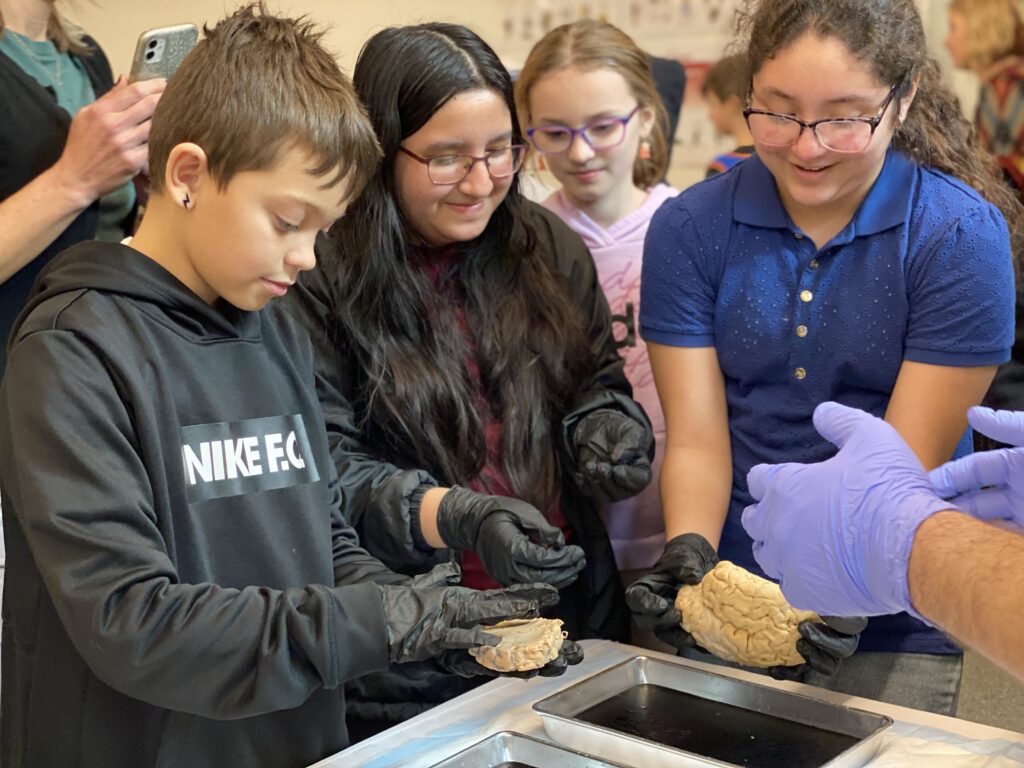
Works Referenced
Organization of Motor Neuron Pathways. (2018, July 20). Medicine LibreTexts.
ELPHNT. (2019, August). Melting Sands. https://www.youtube.com/channel/UCjEK32QlJe0Dy4nXxelXrww
Fenn, E. (2020, August). Wander. https://www.youtube.com/channel/UC81hioFupMsG2MWMQy78oCw
Fulero, A. (2020, October). Spring Thaw. https://www.youtube.com/channel/UCKn6_1iFFC5fxSmFgVC9Fsw
Gladwell, M. (2008). Outliers: The Story of Success. Little, Brown.
Veritasium (Director). (2022, August 2). The 4 things it takes to be an expert. https://www.youtube.com/watch?v=5eW6Eagr9XAYewbrey, R., Mantziara, M., & Kornysheva, K. (2023). Cortical patterns shift from sequence feature separation during planning to integration during motor execution. The Journal of Neuroscience, JN-RM-1628-22. https://doi.org/10.1523/JNEUROSCI.1628-22.2023


